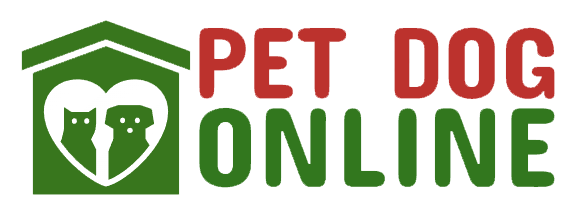
Hip Dysplasia And Joint Problem In Dogs
Arthritis In Dogs
Arthritis in dogs and cats is a common name used to refer diseases and pains related to joints. Arthritis is a common condition in dogs and cats as they age. Arthritis may include joint stiffness, pains and other joint discomforts that might get worsened with age. It can be barely noticed in initial stages. However, it needs to be given attention as joint diseases can severely affect the quality of life of your pet. Taking care of arthritis at the early or very minor stage involves exercising your pet appropriately and providing adequate health supplements (after consulting a vet). Treatment of Arthritis on a severe scale certainly needs surgery and medication.
What Is Hip Dysplasia?
Hip Dysplasia in dogs is a troublesome condition of the joint problem. This disease involves some kind of malformation of the ball and socket in the hip joint, causing frictions and resultant issues. The disease is more particular to large and giant dog breeds. There can be pretty much of things that can lead to joint problems including hip Dysplasia, as discussed below.
What Causes Hip Dysplasia?
Hip dysplasia is sadly one of the most common problem or disease found in these furry guys. There are diverse roots to the disease. Following are some of the major, basic and most common causes of hip dysplasia.
- Genetic causes
- Environment and care
- Rapid weight gain and obesity
- Nutritional factors
The genetic causes of Hip dysplasia tend to be predisposed in the big dog breeds such as Saint Bernard, Labrador retriever etc. As suggested earlier, giant dog breeds are more likely to be affected than small breeds. Environmental and care related factors are concerned with the exercising, activities, care and nurture offered to the dog in the initial period-the first year of their life. Repetitive pressure on joints or overexertion or injury or ligament tearing at a young age simply multiplies the chances of getting hip dysplasia in Dogs at a sooner or later age. Nutritional factors include lack of adequate nutritional supplements in the diet to suffice the health of joints. These can generally be treated at an early age.
Hip Dysplasia Symptoms
Dogs may start exhibiting the hip dysplasia symptoms an age as early as 18 months though in the initial stages, it might be quite difficult to note the symptoms of Hip Dysplasia in your dog. However, it is quite important to know if there is such a joint issue at the earliest so you don’t miss the chance to properly treat and get your pet’s life back to normal. There are some signs or hip Dysplasia symptoms that you can easily notice so as to take remedial measures at the earliest. Listed below are the some of the signs you can notice.
Decreased activity
Hind-limb lameness, for a short term or continuously (also noticeable after exercise)
Decreased movement or stiffness in the hip joints
Apparent joint looseness or laxity
Noticeable Grating or trouble in joint movements
Pain in hip joints- the pet reacting reluctantly or aggressively out of pain each time you touch or try moving its hips
Loss or shrinking of thigh muscles
Joint degeneration
Facing issues in rising
Bunny-hopping
Reluctance or hesitation to jump or run or climb stairs
Hind legs close together unnaturally
Gaining shoulder muscles from greater weight and pressure being exerted on front limbs, since your dog would attempt to avoid weight on its hip.
Preventing Hip Dysplasia or Arthritis
Not just that the treatments and surgeries involved in treating Hip Dysplasia in dogs are pretty costly ones, but it also would be too uncomfortable and painful to see your precious pet in pain and discomfort. So it is best to take care from the very initial days to prevent the occurrence of any disease in your pet.
- Regular Exercising:
Getting the pet into a regular exercising routine from the time they are few months old is a good way to ensure that they have healthy joints. While exercising your dog, make sure you don’t make him put excess pressure consistently on any of the joints. Exercising should be balanced and appropriate as based on the breed, size, its age etc.

- Healthy Food Schedule:
Dog’s diet must include right supplements and nutrients to ensure strong joints. You can refer puppy feeding guide on Marshalls Petzone. It is also advised to consult an expert while creating a diet plan.

- Keeping Track Of Weight And Scheduled Check-ups:
You must consistently check the weight of your pup and make sure it is not having obesity issues. Also, Scheduling quarterly check-ups can ensure you are fully aware of your pet’s health conditions.

- Paying Attention On Preventing Any Kind Of Injuries Or Accidents At An Early Age.
- Try To Avoid Too Much Of Exercise Especially In Growing Pups:
Excess running or exercising would only make joint deformities (if present) worse- they cause excess pressure on joints. Any defect in the structure of the hip joint is increased if excessive running and jumping is done. It doesn’t mean you have to treat your puppy as if it were disabled, but long duration of running or repetitively chasing thrown toys, running alongside a bike, continuously putting stress on joints by playing frisbee can be detrimental to joints.
Studies suggest that faster growing dogs have relatively high chances of catching the disease. a specifically formulated puppy food is suggested by experts for lowering the growth pace of high-risk breeds. Apart from these, while you make a dog purchase, it is better to consider purchasing from a good breeder so there would be least chances of your home-coming puppy having any inherent disease.

Health Supplements/Food For Dogs With Hip Dysplasia
- BEAPHAR HD JOINT MANAGEMENT TABLETS FOR DOGS:
This product is relied upon for easing up pain and discomfort for the dogs with Hip Dysplasia.

Dosage
First 3 weeks – 1 tablet 5kg body weight
After 3 weeks – 1 tablet per 10kg body weight
In case of recurrent pain, it is recommended to consult the vet again.
- PET JOINT SUPPLEMENT FOR DOGS:
Pet Joint is largely trusted for improving or strengthening the joints. It is particularly helpful for joint diseases in old age dogs as well as for dogs that have gone through joint surgeries.

Dosage
Up to 20 kg body weight: 1 tab / day
20 kg – 40 kg body weight: 2 tab / day
Over 40 kg body weight: 3 tab / day
- ROYAL CANIN VET DIET SATIETY
Royal Canin certainly is a trusted pet food brand. This particular product from the brand focus on managing the weight of the pets, since obesity leads to hip dysplasia and many other problems in pets. The food product is carefully manufactured for meeting all the nutritional and health requirements.

What Should You Do If You Notice Any Symptoms?
If you notice any symptoms of hip dysplasia in your dog, or even if you doubt so, the best thing to do is consulting a vet. Simply because hip dysplasia, if ignored in initial stages, or if attempted to treat without professional guidance, may prove to be fatal for your pet, giving way to surgeries or even death. It is always good to have a vet scan and check your pet entirely, once in a while. This would make sure no disease is hiding away or secretly growing in your precious furry buddy.
Hip Dysplasia Dog Treatment
Some pet owners might consider ibuprofen for dogs in an attempt to help ease their pain. It must, however, be noted that the pain relief medications like Aspirin or ibuprofen for dogs can hold a negative effect. In some cases, these have been proven to be toxic to pets. Better to avoid the risk. So it is recommended not to provide your pets with these medications until diagnosed and prescribed by the vet.

Anyway, if prescribed by your vet after diagnosing your pet, there wouldn’t be much for you to worry. You can easily find all these medications as well as other health supplements for your pets on marshallspetzone.com at best rates.
Once you take your pet to the veterinarian for treatment, he’ll be diagnosing and performing the required tests. X-rays form an important part in identifying Hip Dysplasia. Other tests might include blood tests, urine checks etc.
How To Take Care Of A Dog With Hip Dysplasia?
In case of minor Hip Dysplasia, it can be made better without surgical intervention. In this respect, you might have to give some extra time and care to your pet. So for those wondering about the home remedies for Arthritis or hip dysplasia, here are a few things you need to take care while attending a dog with Hip dysplasia: Taking medical assistance or guidance of an expert is a must to make sure you won’t be doing anything wrong.Enrich the pet’s diet with right nutritional and joint supplements. It must be decided with the help of a medical practitioner.

Check weight regularly and try avoiding the condition of obesity. Take note of not including such strenuous exercises that might stress the joints. Include normal exercises just as running, swimming etc. along with those instructed by the vet.Giving the medications and supplements as prescribed by the vet on time.
Pet Wheelchairs For Dogs With Hip Dysplasia And Arthritis
It can be heart-wrenching for many pet owners to see their pets not able to move on their own. In some critical cases of Hip Dysplasia, the dogs may not be able to get up or walk. They might need an external support or the help of owner to even get up. It can be pretty difficult a condition- both for the pet as well as the pet owner watching its struggle. The situation can be quite demanding as well- in terms of attention. Owner’s frequent presence may not be possible too, making the situation more problematic. Similar is the case of pets rendered incapable in severe accidents. Sometimes, in some unfortunate cases, doctors might have to operate out any limb, making the life quite difficult for a dog.

For making their life a tad easier and to bring smiles back to the family, Marshalls pet zone has got all new pet wheelchairs. These wheelchairs for dogs would let them stand and move around comfortably, without the owner’s support. Various size alternatives are available for pet wheelchair to match the requirements. The size chart is provided on the site itself for you to refer. If your pet is facing such issues and you are looking to help it out some way, check out the pet wheelchairs on marshallspetzone.com now! Here is the quick link.In this context, it is worth stating that it is advisable to feed dogs with Hip Dysplasia in stand bowls, so the dogs can comfortably eat without having to be taken out of the wheelchair. You can find adjustable bowl stands on Marshallspetzone.com, that can be set at the height comfortable for the pet to eat. These are not just good for injured pets, but for all.
Author:
Ganga K Kurup
An experienced and professional writer, working to search, create and present most appropriate content and information to those in need. Quite in love with animals and every creation of nature and exceptionally happy to share whatever knowledge I gained from my love and curiosity for the same. I believe in working to make the world a better place to live- not just for the human, but also for all the beings with whom we share this planet.





